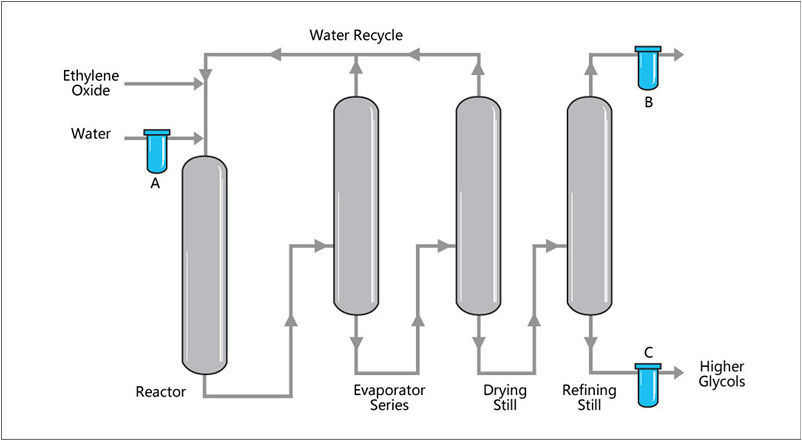
Ethylene glycol production
The main by-products are diethylene glycol and glycol (i.e., triethyl glycol). The formation of high concentration glycol is inevitable because the reaction of ethylene oxide and ethylene glycol is faster than that of water.
The factory maintains the conversion rate by using excessive water, promoting the production selectivity of ethylene glycol
Ethylene glycol is refined through a vacuum fractionation and excess water is removed and recycled in a series of evaporators
Pollution control
Both solid and semi-solid pollutants are introduced into the production process with the following substances
Add raw material water
A byproduct produced during hydrolysis
Controlling the fluctuation of pollution levels during ethylene glycol production will bring the following benefits
Optimized productivity
Ensure final product meets technical requirements